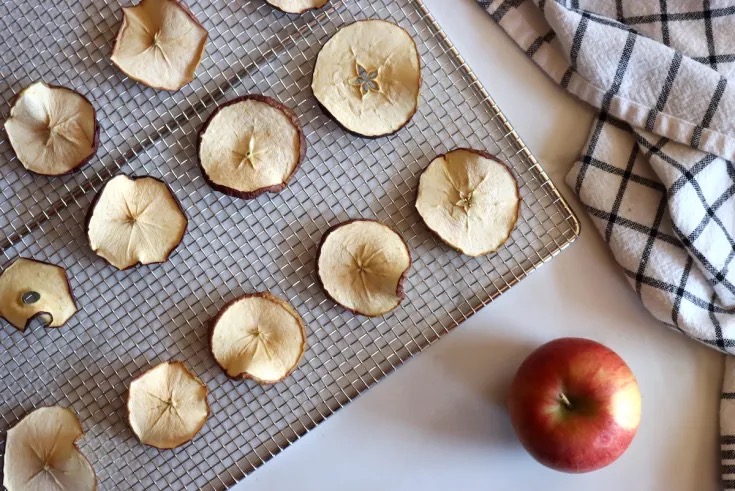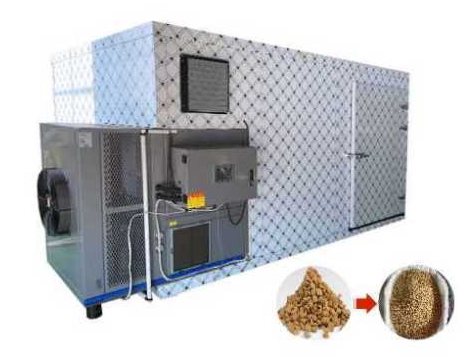
Content Menu
● Understanding Food Dehydration
● Benefits of Using a Food Dehydrator
● Common Uses for Food Dehydrators
● How to Use a Food Dehydrator
● Tips for Successful Dehydration
● Creative Uses Beyond Snacks
● Dehydrating Techniques for Different Foods
>> Fruits
>> Vegetables
>> Meats
● Innovative Recipes Using a Food Dehydrator
● Dehydrating Tips for Beginners
● Conclusion
● FAQs
>> 1. What types of foods can I dehydrate?
>> 2. How long does it take to dehydrate food?
>> 3. Do I need to pre-treat fruits before dehydration?
>> 4. Can I over-dehydrate my food?
>> 5. How should I store dehydrated foods?
● Citations:
Food dehydrators are versatile kitchen appliances that allow you to preserve food by removing moisture. This process not only extends the shelf life of various foods but also enhances their flavors and nutritional value. In this article, we will explore the numerous applications of food dehydrators, including preserving fruits, vegetables, herbs, and even creating snacks and meals.

Understanding Food Dehydration
Food dehydration is a method of food preservation that has been used for centuries. The basic principle involves removing moisture from food to inhibit the growth of bacteria, yeasts, and molds. A food dehydrator works by circulating warm air around the food at low temperatures, typically between 95°F (35°C) and 165°F (74°C), allowing moisture to escape without cooking the food.
Benefits of Using a Food Dehydrator
- Extended Shelf Life: Dehydrated foods can last for months or even years when stored properly.
- Nutritional Retention: Dehydration preserves many nutrients better than other preservation methods.
- Cost-Effective: Buying fruits and vegetables in bulk when they are in season and dehydrating them can save money.
- Reduced Food Waste: Dehydrating excess produce helps prevent spoilage.
- Healthy Snacks: Create your own healthy snacks without preservatives or added sugars.
Common Uses for Food Dehydrators
1. Fruit Preservation: Dehydrate apples, bananas, strawberries, and other fruits to create delicious snacks or ingredients for recipes. Dried fruits can be used in trail mixes, cereals, or as toppings for yogurt.
2. Vegetable Chips: Make your own vegetable chips by dehydrating kale, zucchini, or sweet potatoes. These can serve as healthy snacks or crunchy toppings for salads.
3. Jerky Production: Use a dehydrator to make beef jerky or turkey jerky. This process involves marinating meat before slicing it thinly and dehydrating it until it reaches the desired texture.
4. Herb Drying: Preserve herbs like basil, thyme, and oregano by drying them in a dehydrator. Dried herbs retain their flavor and can be used in cooking throughout the year.
5. Fruit Leather: Blend fruits into a puree, spread it on a dehydrator tray, and dehydrate to create homemade fruit leather—a healthy alternative to store-bought fruit snacks.
6. Soups and Stews: Dehydrate vegetables like carrots, onions, and celery to create your own soup mixes. Just add water when you're ready to cook!
7. Camping Meals: Prepare lightweight meals for camping trips by dehydrating cooked meals or ingredients that can be easily rehydrated with hot water.
8. Dog Treats: Use leftover meats or vegetables to create healthy dog treats by dehydrating them.
9. Fermentation Aid: Some users employ dehydrators for low-temperature fermentation processes, such as drying koji for miso production.
10. Snack Bars: Create energy bars by mixing oats, nuts, dried fruits, and honey, then pressing the mixture into a tray and dehydrating it until firm.

How to Use a Food Dehydrator
Using a food dehydrator is straightforward:
1. Preparation: Clean and slice your food uniformly for even drying.
2. Temperature Settings: Set the appropriate temperature based on the type of food being dried (e.g., fruits at 135°F (57°C), vegetables at 125°F (52°C), herbs at 95°F (35°C)).
3. Loading Trays: Arrange food in a single layer on the trays without overlapping.
4. Monitoring Progress: Check periodically for dryness; most foods will take between 4 to 12 hours to dehydrate fully.
5. Storage: Once dried, store your food in airtight containers in a cool, dark place.
Tips for Successful Dehydration
- Pre-treating fruits with lemon juice or ascorbic acid can help prevent browning.
- Blanching vegetables before dehydration can preserve color and flavor.
- Ensure good air circulation around the trays to avoid uneven drying.
Creative Uses Beyond Snacks
Food dehydrators are not limited to just preserving food; they can also be used for:
- Making homemade potpourri by drying fragrant herbs and flowers.
- Creating decorative crafts using dried fruits or vegetables.
- Drying out citrus slices for use in beverages or as garnishes.
Dehydrating Techniques for Different Foods
Different types of foods require specific techniques for optimal dehydration:
Fruits
To dehydrate fruits effectively:
- Wash and dry them thoroughly.
- Slice uniformly into pieces about 1/4 inch thick using a knife or mandoline.
- Pretreat with lemon juice if desired to prevent oxidation.
- Arrange on trays without overlapping.
Fruits like apples can take about 6–12 hours at 135°F (57°C) until they are leathery but not sticky[3].
Vegetables
For vegetables:
- Wash thoroughly and cut into uniform pieces.
- Blanch if necessary (especially low-acid vegetables) before dehydration to retain color and nutrition.
- Spread evenly on trays; dehydration times vary widely depending on the vegetable type but generally range from 4–12 hours at around 125°F (52°C)[8].
Meats
When making jerky:
- Use lean cuts of meat; trim off excess fat as it can go rancid during storage.
- Marinate if desired before slicing thinly against the grain.
- Dehydrate at temperatures above 160°F (71°C) until dry but still pliable[5].
Innovative Recipes Using a Food Dehydrator
Here are some innovative recipes you can try with your food dehydrator:
1. Banana Chips:
- Slice bananas into 1/4-inch thick pieces.
- Arrange on trays and dehydrate at 135°F (57°C) for about 8–12 hours until crisp.
2. Herbed Tomato Chips:
- Slice tomatoes thinly and sprinkle with herbs like oregano and thyme.
- Dehydrate at 135°F (57°C) until they are light and crisp[6].
3. Cinnamon Apple Stars:
- Slice apples thinly and coat with a mixture of sugar and cinnamon before dehydration.
- This sweet treat takes about 8–12 hours at 135°F (57°C).
4. Vegetable Crisps:
- Thinly slice vegetables like parsnips or sweet potatoes; toss with olive oil and salt before arranging on trays.
- Dehydrate at 135°F (57°C) until crisp[6].
5. Fruit Leather:
- Blend ripe fruits with a bit of sugar or honey; spread evenly on nonstick sheets in the dehydrator.
- Dry at around 135°F (57°C) until pliable but not sticky[4].
Dehydrating Tips for Beginners
For those new to using a food dehydrator:
- Start with simple recipes like fruit chips or vegetable crisps to get familiar with the process.
- Keep notes on what works well—document temperatures, times, and any adjustments you make along the way[9].
- Experiment with different foods; some may surprise you with how well they dehydrate!
Conclusion
A food dehydrator is an invaluable tool for anyone looking to preserve their food while enhancing its flavors and nutritional value. Whether you want to create healthy snacks, reduce waste, or prepare meals for outdoor adventures, a dehydrator offers endless possibilities in the kitchen.

FAQs
1. What types of foods can I dehydrate?
You can dehydrate fruits, vegetables, meats (for jerky), herbs, and even prepared meals like soups.
2. How long does it take to dehydrate food?
Dehydration times vary based on the type of food but generally range from 4 to 12 hours.
3. Do I need to pre-treat fruits before dehydration?
Pre-treating fruits with lemon juice or ascorbic acid can help prevent browning and preserve color.
4. Can I over-dehydrate my food?
While you cannot technically over-dehydrate foods in terms of safety, prolonged drying may lead to loss of nutrients and flavor.
5. How should I store dehydrated foods?
Store dehydrated foods in airtight containers in a cool, dark place to maintain freshness.
Citations:
[1] https://www.lowcarb-nocarb.com/dehydrated-food/
[2] https://www.cnet.com/pictures/tips-for-using-your-new-dehydrator/
[3] https://simpleveganblog.com/how-to-dehydrate-fruit/
[4] https://www.mitchellcooper.co.uk/10-alternative-uses-for-dehydrators
[5] https://www.backpackingchef.com/dehydrating-food.html
[6] https://www.heatherschoice.com/blogs/journal/recipe-for-adventure-dehydrated-fruits-vegetables
[7] https://www.webstaurantstore.com/guide/741/food-dehydrators-buying-guide.html
[8] https://www.freshoffthegrid.com/dehydrating-food/
[9] https://www.backpackingchef.com/dehydrating-fruit.html
[10] https://homesteadingfamily.com/preservation-101-intro-to-dehydrating-food/











